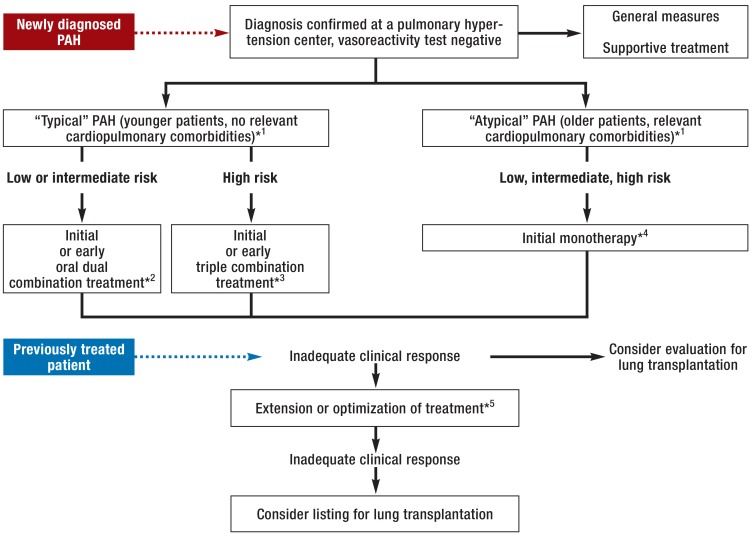Figure 3.
Treatment algorithm for pulmonary arterial hypertension based on the European guidelines and the Cologne Consensus Conference
PAH, pulmonary hypertension
*1 The phenotype determines whether PAH is classified as typical or atypical; age alone is not a sufficient criterion, but the older the patient, the greater the likelihood of comorbidity and risk factors for cardiopulmonary disease (hypertonia, coronary heart disease, diabetes mellitus, obesity, etc.).
*2 Initiation immediately, or within 3 months of diagnosis, of combination treatment with endothelin receptor antagonists plus phosphodiesterase-5 inhibitors or stimulators of soluble guanylate cyclase.
*3 Initiation immediately, or within 3 months of diagnosis, of combination treatment with endothelin receptor antagonists plus phosphodiesterase-5 inhibitors or stimulators of soluble guanylate cyclase plus a prostacyclin derivative.
*4 In these often elderly patients, who present with cardiac and/or pulmonary comorbidity, the efficacy and tolerance of drugs for PAH have been less extensively investigated; as this is particularly true fo combination treatments, starting with monotherapy is recommended.
*5 Individual adjustment of treatment: in “typical” PAH, if it seems appropriate, further escalation of the combination treatment to include prostacyclin derivatives; consider SC/IV prostacyclin; consider switch from phosphodiesterase-5 inhibitor to sGC stimulator; in “atypical” PAH,decide case by case; moreover, optimize supportive treatment for all patients, including rehabilitation measures.

